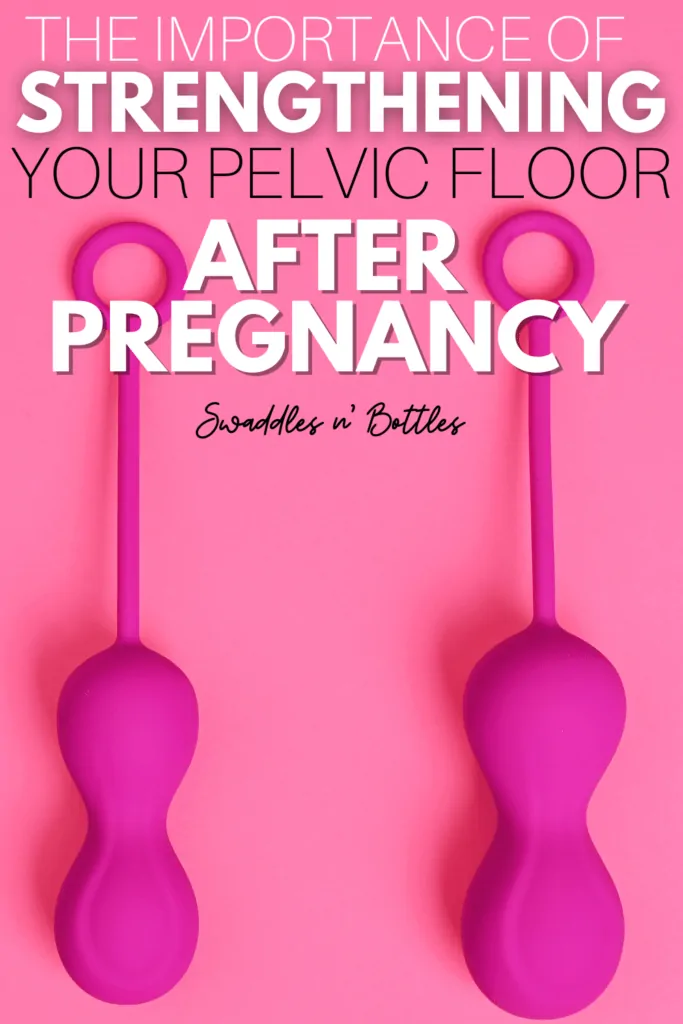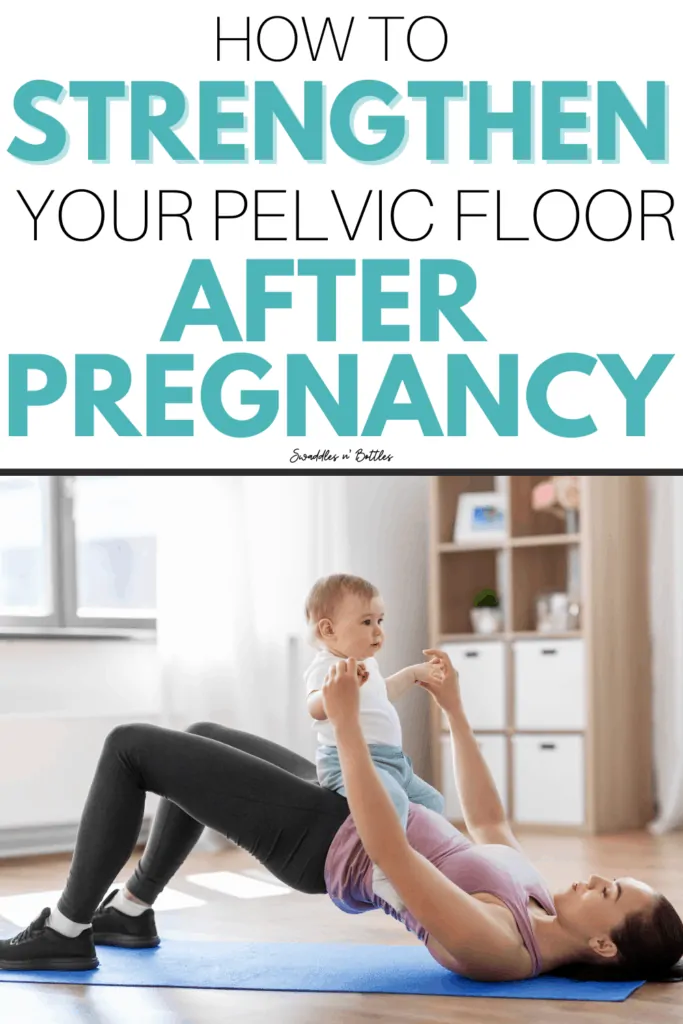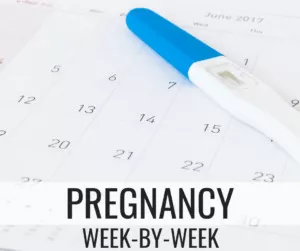
Strengthening Your Pelvic Floor After Birth
Why don’t more people talk about how to rehabilitate your pelvic floor after birth? Pelvic floor health is a topic far under-discussed in the pregnancy/postpartum world.
I remember reading a new mom’s Instagram post normalizing the idea of “leaking after birth”. She shared how she’s never been able to workout without leaking urine after she gave birth to her first child and then explained how it’s ok because it’s “normal”.
Here’s the thing…it isn’t necessarily normal to have chronic pelvic floor muscles.
Yes, they worked hard during your pregnancy and even harder during labor, but like any muscle, with a little TLC, you can be on the path to strengthen your pelvic floor muscles after birth!
Wait…what is your pelvic floor?
Your pelvic floor is a group of muscles located in your pelvic that support your pelvic organs from the front of the pelvis (at the pubic bone) to the back (at the tail bone) and across the sides.
As mentioned, the purpose of this group of muscles is to support your pelvic organs — bladder, uterus, bowel.
Also, they help to maintain control over your bladder & bowels, help control abdominal pressure, and aid in spinal stability.
How can I tell if I have a weak pelvic floor?
Common postpartum pelvic floor issues are commonly displayed by one or more of the following symptoms:
- Leaking urine (during exercise, walking, sitting/standing)
- Painful Intercourse
- Unable to fully empty your bladder (having the urge to go often)
- Fecal Incontinence
- Pelvic Pain
- Inability to control a pelvic floor contraction (such as a kegel)
- Heaviness or bulging in the vagina (signs of prolapse)
Strengthening your pelvic floor after birth
If all this resonates with you, please know that although these symptoms are normal to experience after childbirth, they’re not normal to live with forever.
How long does it take for it to go back to normal after childbirth?
According to some professionals, they’ve found that it can take up to 6 months for your pelvic floor to fully recover after giving birth to your baby.
Personally, I found those statistics to be right on the money after my first was born.
I had no idea pelvic floor health was a thing. I went about my business after I healed down there and thought I was in the clear until I noticed I couldn’t control myself from leaking during exercise.
I began using a program called the Mutu System to help me rehabilitate my core and pelvic floor together and within 2 months I was able to exercise again without any leaks!
Knowing all this information, I think the biggest takeaway is to understand it takes TIME. 4 months, 6 months, whatever amount of time it takes, be patient with yourself as your body heals.

How can I fix my pelvic floor muscles after pregnancy?
Rehabilitating your pelvic floor muscles after pregnancy is the BEST way to tighten and help those muscles recover.
Fortunately, there are a few ways you can incorporate rehabilitating your postpartum pelvic floor!
- Pelvic Floor Physical Therapy
Physical therapy is by far the best way to go if you have access to a physical therapist.
I went through this myself after my 2nd was born and within 3 months I felt completely back to normal.
You can locate a therapist near you here or simply call your insurance company to see if you can have this covered through them.
During pelvic floor physical therapy, your PT will typically do an external and internal examination to see where your problem areas reside. Based on their findings, they will usually recommend various exercised for your do at home, along with practicing them in the office.
Some of the techniques you may hear them referencing are:
- Trigger point therapy — used when you have a select area of tension where they use pressure to slowly get rid of that tension within the muscle. In more severe cases, sometimes local anesthetic injections are necessary
- Perineal Massages — if your issues consist more of insertion pain, this could be due to tissues that need help relaxing and loosening.
They also have a variety of specialized tools to help as well, but from my own personal experience & conversations with my PT, it’s not as common to have to use the specialized tools when other methods are being applied effectively!
And don’t worry, I know the idea of pelvic floor PT sounds intimidating, but with the right therapist, you’ll feel at ease knowing you’re one step closer to ending the days of leaking urine or even painful intercourse!
- Use A Pelvic Trainer (Elvie, PeriFit)
If you don’t have access to a PT, using an at-home Pelvic Trainer can be a great alternative!
One of the most well-known devices out there is called the Elvie Trainer.
Elvie has won multiple awards for their trainer which has shown to improve bladder control, enhance intimacy, and overall strengthen your pelvic floor.
It is important to make sure you run this by your doctor before use. For instance, if you had a prolapse, you would not want to be using a pelvic trainer like this without consulting with them first.
- Various Kegel Exercises & Movements
Nowadays, you can pretty much find anything you need on the internet, including kegel exercises and pelvic floor strengthening moves.
Though I’m always one to lean towards an in-personal professional or an online program like the Mutu System (which has helped hundreds of women across the world improve their core and pelvic floor health), you can definitely find moves to do at home with a quick google search.
Here’s one youtube video I found helpful as the trainer explains each movement and helps you focus on those kegel contractions: https://youtu.be/ot6AxbKg0dU
Hopefully, you’re feeling a lot more informed about you can strengthen your pelvic floor after birth. You don’t need to live with annoying bladder leaks or painful intercourse forever.

Hi, I’m Karissa! A boy mama livin’ in sunny San Diego with my boys, husband, and our two big furbabies! After facing many postpartum struggles after my first was born, I grew passionate about helping other new and expecting moms find the support & confidence I lacked, as they transition into the scary, but exciting journey into motherhood!









